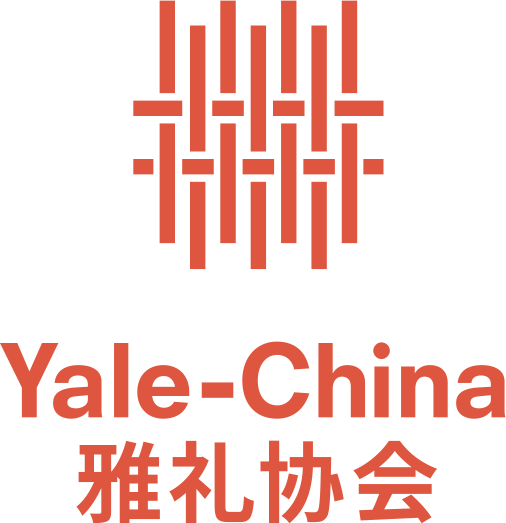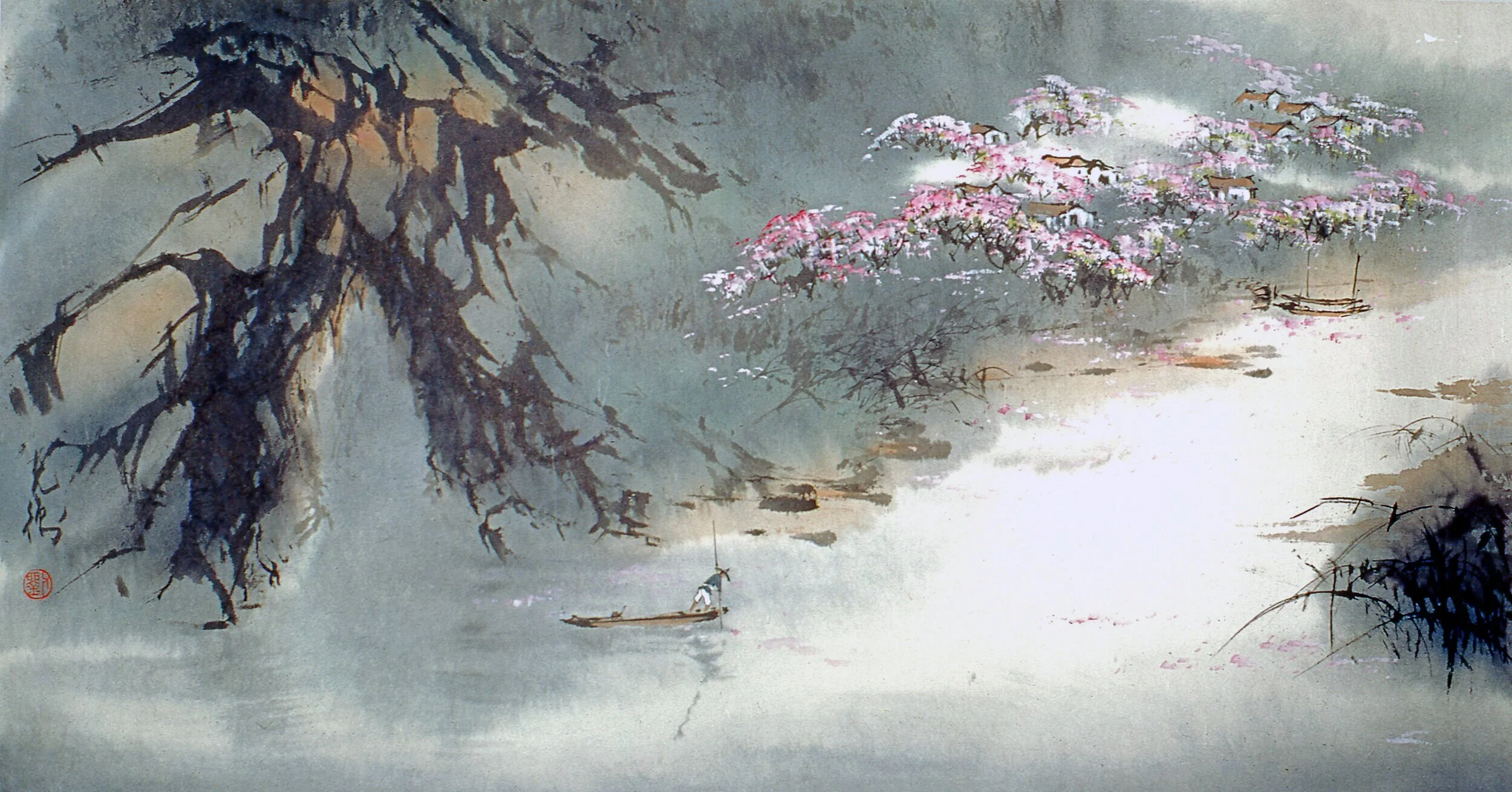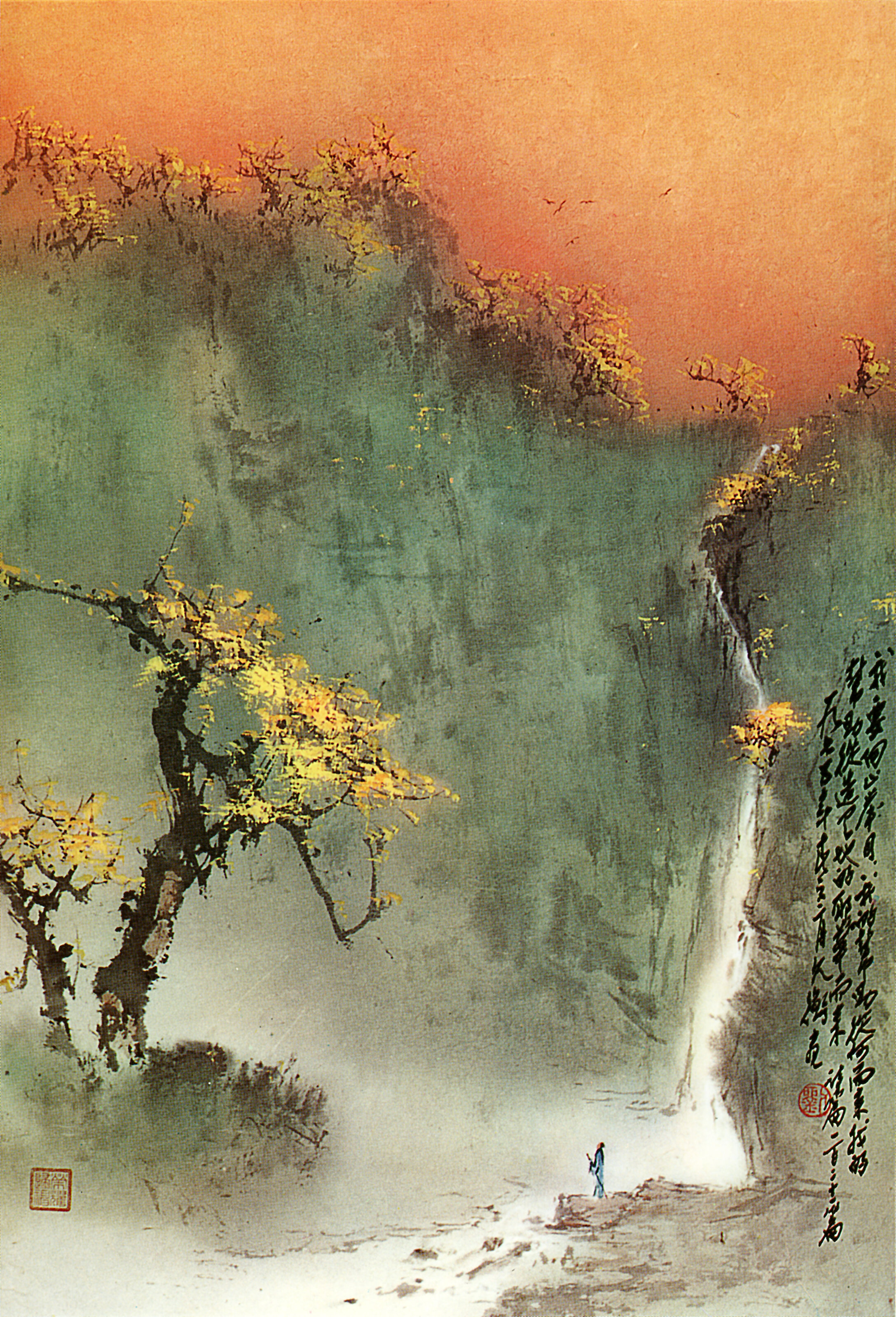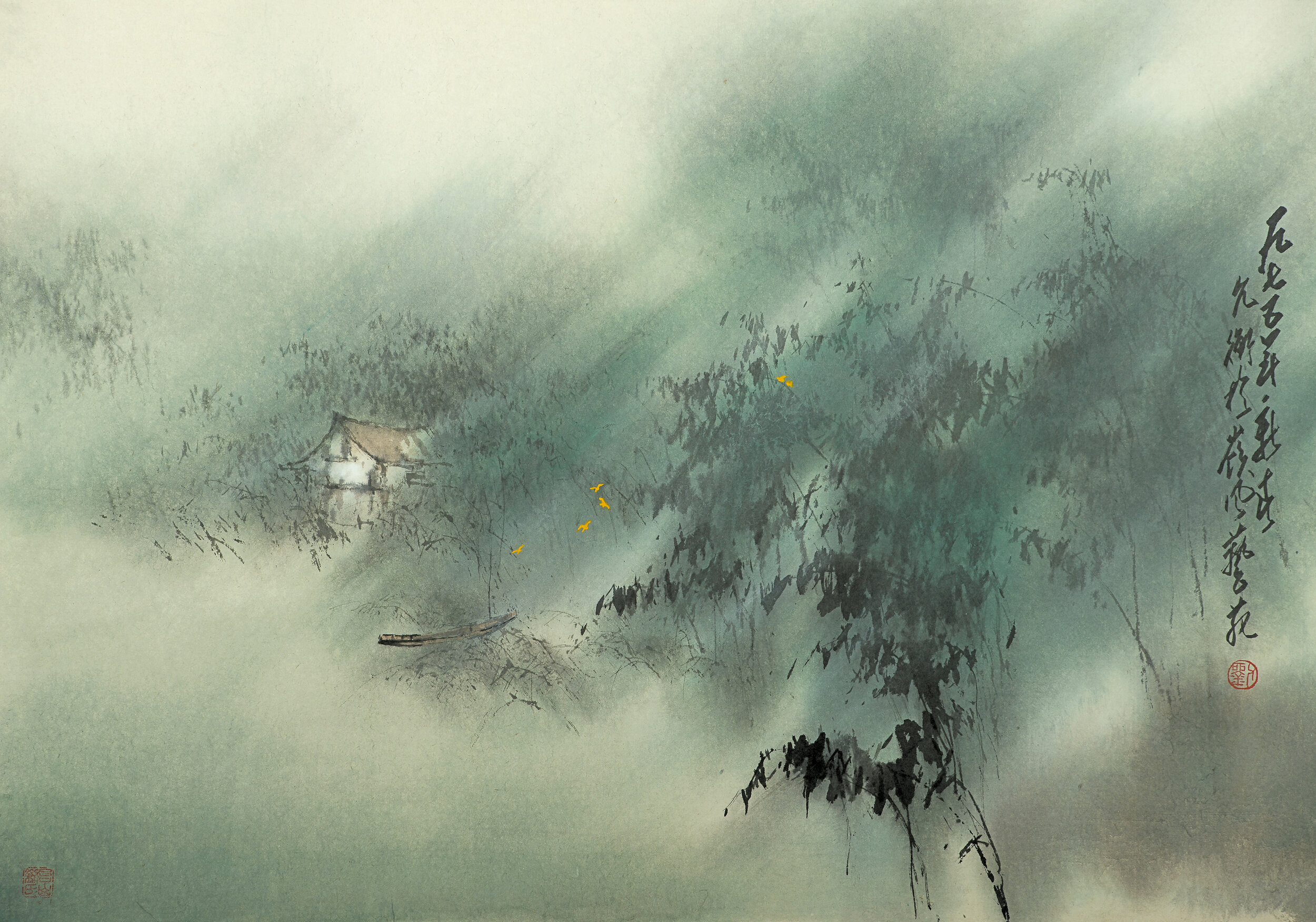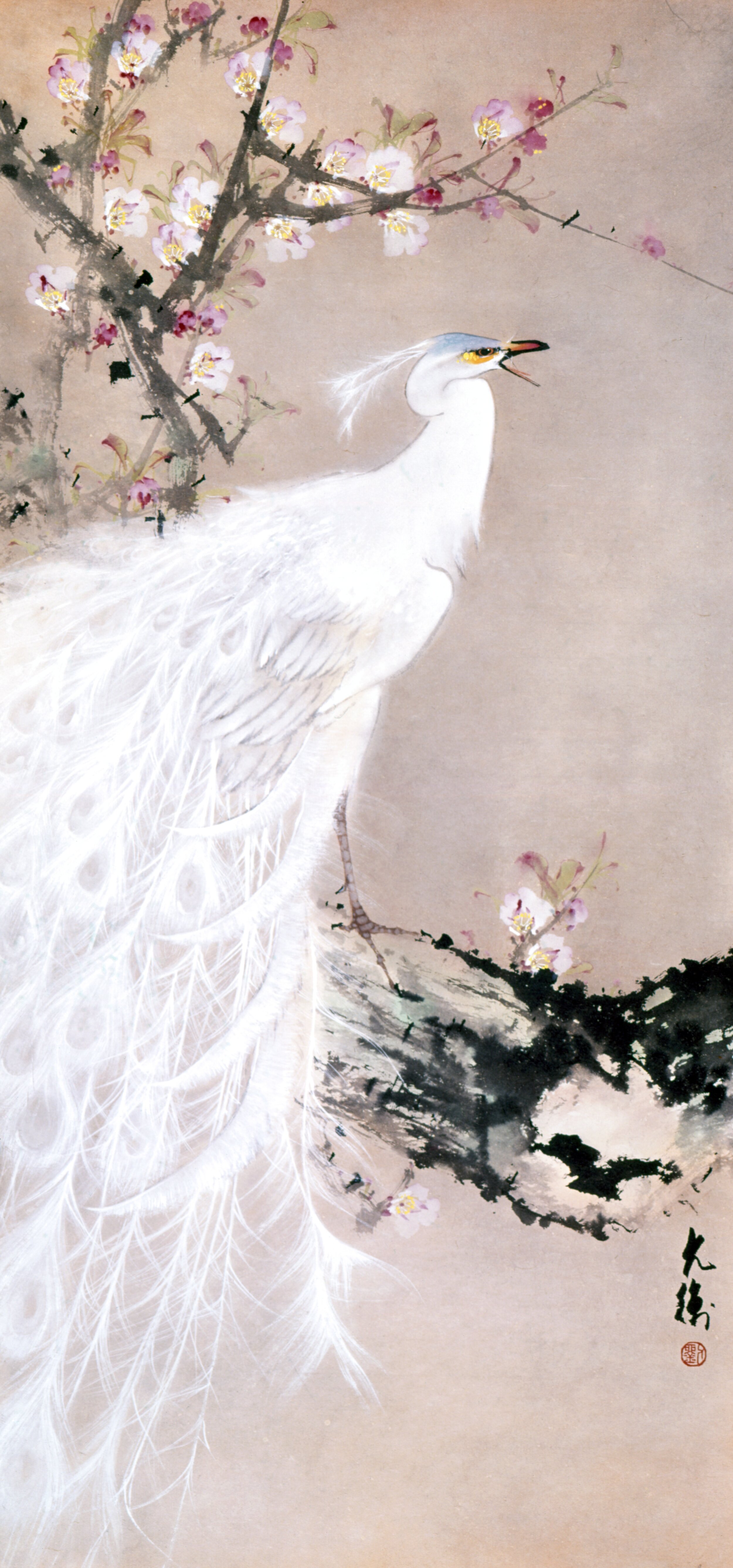
Bridging Cultures: The Art of Stephen Lowe
Curator Statement
On the doorstep of a new decade, 45 years after my father Stephen Lowe’s passing in 1975, my family and I are thrilled to have this wonderful opportunity to continue sharing the story of his life and art with the world. This exhibition features 13 of Stephen's most beloved works which demonstrate his mastery of the Lingnan style of painting. Stephen was well versed in a variety of subject matter including lively birds, delicate flowers, pensive figures, and most of all, soaring landscape vistas, all inspired by the rich views of southern China. There are certain characteristics and techniques that define the Lingnan style and this exhibit has many examples.
His greatest joy was to have the simple beauty of his art transcend the boundaries of language and nationality -- to connect with the viewer and move them without words. Stephen strove to be a cultural bridge between East and West through his painting, and though he is not here with us today, his legacy continues to share that vision.
Anna Lowe Lam
Stephen Lowe's Life and Legacy
Stephen Lowe painting in Hong Kong, 1969
Stephen Lowe was born in 1938 in rural Guangdong Province, China. Due to China’s civil war, Stephen left to join his grandfather in British Columbia, Canada at age 15. A year after arriving, Stephen fell ill with tuberculosis and was transported to Victoria for treatment. In 1959, Stephen traveled back to Hong Kong to further his artistic studies with his teacher and mentor Professor Zhao Shaoang.
In Hong Kong, he met Eunice Tam. They married in Hong Kong in 1960 and returned to settle in Victoria, BC, Canada. In 1961, Stephen was invited to stage a solo show at the Art Gallery of Greater Victoria. His paintings provided a lens into Chinese culture through the beauty of his Lingnan-style paintings. It was Stephen’s vision to bridge eastern and western cultures through art and to share his work with the world.
In 1969, Stephen focused on advancing his artistic technique and reconnecting with the landscape that inspired his creativity in Hong Kong. In 1970, Stephen received an invitation to mount a solo exhibition at the newly- opened Royal British Columbia Museum and held exhibitions across Canada and the world.
In 1974, Stephen was diagnosed with a rare form of lymphoma. On October 9, 1975, at the age of 37, Stephen Lowe passed away.
Following his untimely passing, Eunice felt compelled to continue Stephen’s legacy. In 1980, she published the art volume “The Art of Stephen Lowe.” It caught the attention of the elite Artists’ Association of China and resulted in an invitation to exhibit Stephen’s work in China’s National Art Museums. It received critical acclaim across China and was the first time a Chinese-Canadian had been invited to present a solo exhibition in China’s leading art museums.
In 2016, Eunice published the art volume, “Stephen Lowe – A Bridge Between Cultures”.
Today, Eunice and her family celebrate 50 years since the inception of Stephen’s namesake gallery in Victoria, and the on-going success of the gallery in Calgary, Canada. The gallery proudly represents Canadian artists of many diverse ethnic backgrounds.
Read the expanded version of Stephen Lowe’s Life and Legacy here.
View the Bridging Cultures: The Art of Stephen Lowe exhibit below.
Explore the Lingnan style Stephen mastered below.
Bridging Cultures: The Art of Stephen Lowe
Bridging Cultures: The Art of Stephen Lowe features 13 signed and numbered edition prints that illustrate Stephen Lowe’s range of work throughout his career. These pieces are from the Stephen Lowe Art Gallery based in Calgary, Alberta, Canada. This exhibit was made possible by the generosity of Stephen Lowe’s family and friends.
Click on the images below to see full size, title, year painted, dimensions and print number. Each image is also accompanied by lines of prose or story fragments written by David Lowe (Stephen’s son).
Stephen Lowe's Techniques
Lovers Seeking Treasured Plum Blossoms on New Year’s Eve
The “One Stroke” Technique
The "one stroke" brush technique a cornerstone concept of Lingnan painting. It takes seconds to perform but a lifetime to perfect. This is where the artist can achieve shadow and light, depth and dimension, rhythm and movement, strength and softness - all in one stroke.
These are best illustrated for example, in the body and feathers of the small birds and the stalk of a tree branch as seen in Tree Peony, Queen of all Flowers; the face of mountain rocks in Legend of the Peach Blossom Stream; the brush and twigs in Lovers Seeking Treasured Plum Blossoms on New Year’s Eve; and the bamboo in Surprise.
Double Tree Peony
The “Boneless” Technique
The “boneless” technique is where washes of color, without outline, can still render contour, shading, and dimension as seen in the body of the cat in Surprise; the petals and leaves of the flowers in Elegance and Double Tree Peony; the mountain and trees in Snow Transforms Mountain and Village; and the bamboo forest in Lonely Boat in Bamboo Forest.
I Will Lift Up Mine Eyes Unto The Hills- Psalm 121
Melding of East and West
The last years of Stephen's life saw some of his most brilliant paintings influenced by western watercolor techniques which led to even looser brushwork and washes, creating more abstract and ethereal images. This used in panoramic landscapes dotted with tiny villages or figures, gave a sense of tremendous scale and grandeur -- an effect that was a favorite of Stephen's, as seen in Snow Transforms Mountain and Village; Lovers Seeking Treasured Plum Blossoms on New Year’s Eve; and I Will Lift Up Mine Eyes Unto The Hills- Psalm 121.
Acknowledgment from Eunice, Anna, David, and Theresa Lowe
We would like to thank the Yale-China Association for the privilege and honour of sharing “Bridging Cultures: The Art of Stephen Lowe” with the Yale community and beyond.
We are also tremendously grateful to Wendy James for her vision, and financial sponsorship which made this exhibition possible.
May the poetry of Stephen's paintings inspire joy, peace and goodwill.
